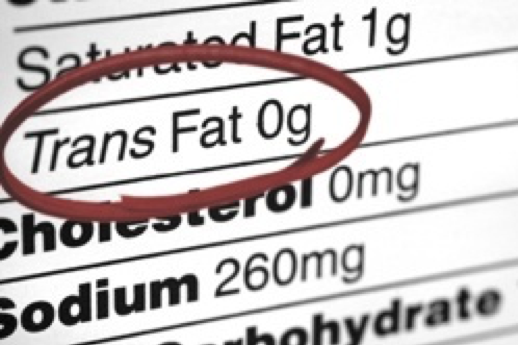Fat- Do I have to avoid it to lose weight?

No Fat, low fat, high fat? What are we supposed to be eating to lose weight and be healthy? If you are confused you are not alone. There are so many diet trends out there, from Paleo, Keto, Low carb, high protein and on and on the list goes. It is not surprising that you are ripping your hair out trying to figure out what works and what is safe.
No fat or low-fat diet trends emerged in the 70’s, making Americans desperately afraid that if they consumed fat they would surely drop dead of a heart attack before the age of 50. The food industry capitalized on this fear, making billions by stamping No Fat or low-Fat labels on items that never had fat in them to start with. The reality is that while our diets may have been lower in fat, we were becoming and are fatter than ever. The reason? added sugar. To make up for the taste and texture of most low- fat products, sugar and chemicals were added. As a result, or body’s went into overdrive trying to process all this excess, storing it as fat, especially around our middles. Researchers in the field have discovered that fat really is not the culprit we once thought it to be. In fact, some types of fat have protective factors against cardiovascular disease. The truth is we need fat. The key is to get enough of the right fats, and still stick within a healthy calorie count. Fat is an essential nutrient that supports healthy skin and hair, facilitates absorption of fat-soluble vitamins, and supports brain health.
FAT and Weight Loss
If you are trying to lose weight, you have to remember that fats do contain more calories per gram (9 cals per gram). However, you still want a healthy percentage of your daily calorie intake to come from good fats. The Dietary Guidelines for Americans suggest that 25 to 35 percent of your daily calories should come from fat. So, if you consume 1,500 calories on your weight-loss diet, you’ll want between 42 and 58 grams of fat daily; whereas a person eating 2,000 calories would consume between 56 and 78 grams of fat.
To figure the grams according to a specific calorie intake, use the following equation:
[(calories per day consumed) x .25 or .35] / 9 = grams of fat to consume per day
Not all fats are created equal

Trans Fat
The trans fats, that are found in processed and commercial foods, should be discouraged, as they’re more likely to encourage weight gain and endanger your heart’s health. Trans fat raises your LDL (“bad”) cholesterol and lowers your HDL (“good”) (HDL) cholesterol. Avoid trans-fat as much as you can. The FDA has mandated that by 2020, all food labels will list trans- fat in the total fat breakdown.

Sources of Trans Fat
- Trans fat is hidden in most fried foods like French Fries, onion rings, burgers, biscuits, fried chicken. A large serving of French fries can contain as much as 5 grams of trans- fat according to Mayoclinic.com.
- You can also find Trans-fat hidden in baked goods that are packaged. They are used to extend the shelf life and improved the texture. Packaged cookies, donuts, pies, pastries can contain up to 2-3 grams per serving.
- Margarine is another culprit for trans-fat. They are cheaper than butter and contain saturated fat which is a trick to make you think they are better for you. 1 tablespoon of margarine contains up to 3 grams of trans- fat.
- Packaged snacks like potato chips, cheese curls, frozen pizza, crackers, frosting, microwave popcorn all contain trans-fat. 1 serving of crackers, 14 pieces has upwards to 2 grams of trans fat.
Saturated Fat
Along with trans-fat, the amount of saturated fat should be kept to a minimum. The Mayo Clinic and the American Heart Association among many others recommend a diet that is low in saturated fat. Saturated fat raises the levels of “bad” low-density lipoprotein (LDL) cholesterols and can increase the risk of cardiovascular disease and type 2 diabetes. The American Heart Association recommends aiming for a dietary pattern that achieves 5% to 6% of calories from saturated fat.

Sources of Saturated Fat
- fatty beef
- lamb
- pork
- poultry with skin
- beef fat (tallow)
- lard and cream
- butter
- cheese and other dairy products made from whole or reduced-fat (2 percent) milk.
The good fats

Monounsaturated, Polyunsaturated and Omega 3’s
Eating good fats in place of saturated fats or highly refined carbohydrates reduces harmful LDL cholesterol and improves the cholesterol profile. It also lowers triglycerides. Foods made up mostly of monounsaturated and polyunsaturated fats are liquid at room temperature,
Sources of Good Fats
- vegetable oils like sunflower or safflower oil, as well as hazelnut, olive, canola, avocado, almond, peanut, corn, sesame, rice bran, soybeans
- hazelnuts (or filberts), macadamia nuts, pecans, almonds, pistachios, peanuts and or peanut butter, sesame seeds, sesame seed butter or paste — also known as tahini, Sunflower seeds and sunflower seed butter, pumpkin and flaxseeds, walnuts, chia seeds, hemp seed
- Atlantic pickled Herring, halibut, sablefish, mackerel, cod liver oil, tuna, salmon, sardines
- Avocado
When you are trying to lose weight, it is true that you have to cut your calories. However, you want to make sure that you are eating a balanced diet and that does include healthy fats, lean protein, fresh fruits and vegetables and whole grains. Try experimenting with new recipes that contain healthier fats, like the ones found in a lot of Mediterranean Diet Recipes. http://dish.allrecipes.com/top-mediterranean-diet-recipes/. You can lose weight and improve your overall health with simple shifts in the way you eat. For more information on how to lose weight and keep it off for the long term contact us at BC2.

